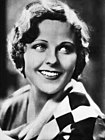The Lone Eagle is a 1927 American silent melodrama directed by Emory Johnson, based on the story by Emilie Johnson, and starring Raymond Keane, Barbara Kent and Nigel Barrie.[1] It was released by Universal Pictures on September 18, 1927.[2]
Plot
During World War I, American pilot Lieutenant William (Billy) Holmes (Raymond Keane) accepts an assignment with the Royal Flying Corps. The unit location is on the Western Front and has seen plenty of action. During Billy's first air battle, he is accused of cowardice.
He meets an attractive French woman named Mimi (Barbara Kent). They start to fall in love, but the cowardice accusation continues to dog Billy. Mimi stirs Billy's emotions, and he becomes determined to prove his mettle in battle.
The unit receives its next flying mission. The group takes to the sky and encounters a squadron of German aircraft. American ace Red McGibbons (Donald Stuart) is one of Billy's best friends. During the dogfight, Red manages to shoot down a German plane, but is also killed.
The pilot of the downed German aircraft turns out to be the brother of the leader of the German squadron. Lebrun (Cuyler Supplee), the squadron leader, is the top German ace of the squadron. He is determined to avenge his brother's death. He challenges the Royal Flying Corps to an aerial fight.
Still thinking of his best friend, Billy accepts the challenge from LeBrun. Mimi tries to dissuade him, but fails. He jumps in the cockpit of his Sopwith Camel, takes off in pursuit of Lebrun. An epic air duel breaks out, and Lebrun shoots down Billy's aircraft. Billy survives, then commandeers another aircraft from his friend Sven Linder (Jack Pennick). He returns to the air and shoots the German ace down.
Billy is a hero and soon the Allies and the Germans sign the Armistice. With the war over, Billy returns to the United States along with his new bride – Mimi.
Cast
- Raymond Keane as Lieutenant William Holmes
- Barbara Kent as Mimi
- Nigel Barrie as Captain Richardson
- Jack Pennick as Sven Linder
- Oskar Marion as Captain W. Buehl
- Wilson Benge as Truck Driver
- Donald Stuart as Red McGibbons
- Cuyler Supplee as Lebrun
- Frank Camphill as Lieutenant at Desk
- Marcella Daly as Nannette
- Eugene Pouyet as Innkeeper
- Brent Overstreet as Aviator
- Egbert Cook as Aviator
Production
The credits of The Lone Eagle claim that Emilie Johnson only "assisted" in the screenwriting.[citation needed]
Principal photography took place on location at a small airport near San Diego, California.[3] The French village was built on 2 acres of the Universal back lot.[4]
Reception
Aviation film historian James Farmer in Celluloid Wings: The Impact of Movies on Aviation (1984) noted, despite the film's tagline:[5]
Greatest of all airplane stories taken from the great war. . .The Lone Eagle was a cheaply produced World War I air drama.
Preservation
According to the Library of Congress website, this film has the status of 'No holdings located in archives; thus, it is presumed all copies of this film are lost'.[6]
Gallery
-
Barbara Kent
Mimi -
Raymond Keane
Lt William Holmes -
Nigel Barrie
Captain Richardson -
Marcella Daly
Nannette -
Oskar Marion
Captain W.Buehl -
Wilson Benge
Truckdriver
References
- ^ The Lone Eagle at the TCM Movie Database
- ^ The Lone Eagle at the AFI Catalog of Feature Films
- ^ Hugh, Wynne (1987). The Motion Picture Stunt Pilots and Hollywood's Classic Aviation Movies. Pictorial Histories Publishing Co. ISBN 0933126859.
- ^ Moving Picture Weekly Pub. Co.; Moving Picture Weekly Pub. Co. (1927). Universal Weekly (1927-1930). Media History Digital Library. New York, Moving Picture Weekly Pub. Co.
- ^ Farmer, J.H. (1984). Celluloid Wings (in French). Tab Books. ISBN 978-0-8306-2374-7. Retrieved November 23, 2020.
- ^ The Library of Congress American Silent Feature Film Survival Catalog: The Lone Eagle - No holdings located in archives
Bibliography
- Farmer, J.H. (1984). Celluloid Wings (in French). Tab Books. ISBN 978-0-8306-2374-7. Retrieved November 23, 2020.
- Hugh, Wynne (1987). The Motion Picture Stunt Pilots and Hollywood's Classic Aviation Movies. Pictorial Histories Publishing Co. ISBN 0933126859.
- Stoff, J. (2014). Charles A. Lindbergh: The Life of the "Lone Eagle" in Photographs. Dover Transportation. Dover Publications. ISBN 978-0-486-15397-1. Retrieved November 23, 2020.















You must be logged in to post a comment.